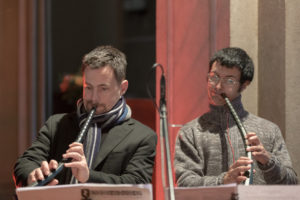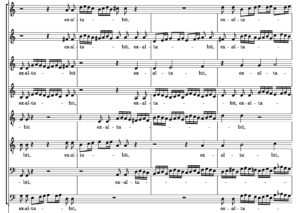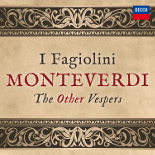Listen out for…

Gawain Glenton and Andrea Inghisciano
Cornetto ornamentation
A feature of this recording is the staggering cornetting of Gawain Glenton and Andrea Inghisciano. Here Andrea can be heard improvising passaggi (ornaments of rapid passagework) over chordal falsobordone (chordal chanting of text, a style familiar to many from the Dixit Dominus of Monteverdi’s 1610 Vespers). Heinrich Schütz recommends this at one point in the Weihnachtshistorie (Christmas Story) for a similar falsobordone texture; the very opening to Monteverdi’s 1610 Vespers (‘Domine ad adiuvandum) is the same thing – but written out for the instrumentalists. Marvel at Andrea’s playing in these excerpts from track one of the CD.
More ornamentation
While most early 17th century composers expected performers to add ornamentation at cadences according to taste, not all of them welcomed the wholesale re-composition of their pieces, though the fact that they railed against it shows that it happened – so what’s the ‘authentic’ thing to do?! Â See I Fagiolini’s brief video ‘working with singers’
 The story of musical notation of this time is of composers adding more and more detail themselves, so that for musicians wanting to understand how to ornament Monteverdi today, the best they can do is look at his surviving music in which ornamentation features. Â The first psalm of this Vespers recording is full of the most extravagant written-out ornamentation – very similar to the look of many of the Madrigals of War from 1638. Â Here’s a brief passage of what becomes all eight singers and two instruments (plus doubling brass) all doing it at the same time. Download the score to follow along; this section starts at p.25. (Thanks to editor Peter Rottlaender, whose excellent editions can be found at www.cpdl.org)
The story of musical notation of this time is of composers adding more and more detail themselves, so that for musicians wanting to understand how to ornament Monteverdi today, the best they can do is look at his surviving music in which ornamentation features. Â The first psalm of this Vespers recording is full of the most extravagant written-out ornamentation – very similar to the look of many of the Madrigals of War from 1638. Â Here’s a brief passage of what becomes all eight singers and two instruments (plus doubling brass) all doing it at the same time. Download the score to follow along; this section starts at p.25. (Thanks to editor Peter Rottlaender, whose excellent editions can be found at www.cpdl.org)
